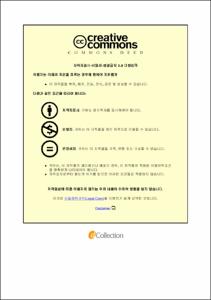양측 인공 슬관절 전치환술시 수술 간격에 따른 내과적, 외과적 합병증 발생률 비교: 국민건강보험 청구 데이터를 이용한 빅데이터 분석
- Abstract
- Background
Controversy exists regarding the safety of simultaneous compared to staged bilateral TKA. The optimal interval for staged bilateral TKA has not yet been determined.
Purpose
This study aimed to analyze and compare the postoperative medical and surgical complications of bilateral TKA and determine the optimal intervals in staged bilateral TKA.
Methods
This study included 58,583 patients who underwent bilateral TKA between January 2009 and July 2019 using the Korean National Insurance Database; data on patient characteristics, including demographics, hospital type, and comorbidities, were collected. Major medical complications, such as acute myocardial infarction, pneumonia, intracranial hemorrhage, and ischemic stroke, within 30 days and surgical complications, including infection and revision, within 90 days of bilateral TKA were assessed. Patients were categorized into six groups according to operative interval: simultaneous, 1–7, 8–14, 15–30, 31–90, and 91–180 days. The 30-day medical and 90-day surgical complication rates were compared among the six groups. The annual trends in complication rates were evaluated and factors for postoperative complications were assessed using multivariable logistic regression analysis to adjust for confounding variables.
Results
Of the 58,838 patients, 24,379 underwent simultaneous bilateral TKA, while 34,459 underwent staged bilateral TKAs. The number of bilateral TKAs increased from 2,276 in 2009 to 8,703 in 2018. The proportion of patients who underwent simultaneous TKA increased from 9.8% in 2009 to 57.3% in 2018. The 30-day medical complication rates of simultaneous and staged bilateral TKA were 2.0% and 2.2%, respectively and were not significantly different (p = 0.069). The medical complication rate in simultaneous bilateral TKA decreased annually from 6.7% in 2009 to 1.7% in 2013 (relative risk [RR] = 0.69, 95% confidence interval [CI] 0.60 to 0.79, p < 0.001). During the same period, simultaneous bilateral TKA showed higher medical complication risk than that in staged bilateral TKA (RR = 1.40, p = 0.005, 95% CI 1.10 to 1.78). Conversely, in the five years after 2014, the medical complication rates of simultaneous bilateral TKA were significantly lower (1.9%) than those of staged bilateral TKA (2.2%) (p = 0.023). However, this difference was minimal. After adjusting for confounding factors, simultaneous bilateral TKA and intervals between 8 and 14 days did not significantly increase the risk of postoperative medical complications. Cardiopulmonary comorbidities (angina, ischemic stroke, heart failure, and chronic obstructive pulmonary disease) and age (> 70 years) were associated with postoperative medical complications. The 90-day surgical complication rates of simultaneous and staged bilateral TKA were 0.2% and 0.2%, respectively and were not significantly different (p = 0.562).
Conclusion
The complication rate of simultaneous bilateral TKAs has recently decreased and is comparable to that of staged bilateral TKAs. Simultaneous bilateral TKA did not increase the incidence of post-operative complications. An interval of one to two weeks would be suitable for staged bilateral total knee arthroplasty. Cardiopulmonary comorbidities were associated with a higher risk of major medical complications after bilateral total TKAs. With regard to careful preoperative patient evaluation and consideration of surgeons' preferences and patients' desires, simultaneous bilateral TKA could be an appropriate option for patients requiring bilateral TKAs.
- Issued Date
- 2022
- Awarded Date
- 2022-08
- Type
- dissertation
- Alternative Author(s)
- Jun-gu Park
- Affiliation
- 울산대학교
- Department
- 일반대학원 의학과의학전공
- Advisor
- 빈성일
- Degree
- Doctor
- Publisher
- 울산대학교 일반대학원 의학과의학전공
- Language
- eng
- Rights
- 울산대학교 논문은 저작권에 의해 보호 받습니다.
- Appears in Collections:
- Medicine > 2. Theses (Ph.D)
- 파일 목록
-
-
Download
 200000629873.pdf
기타 데이터 / 3.98 MB / Adobe PDF
200000629873.pdf
기타 데이터 / 3.98 MB / Adobe PDF
-
Items in Repository are protected by copyright, with all rights reserved, unless otherwise indicated.